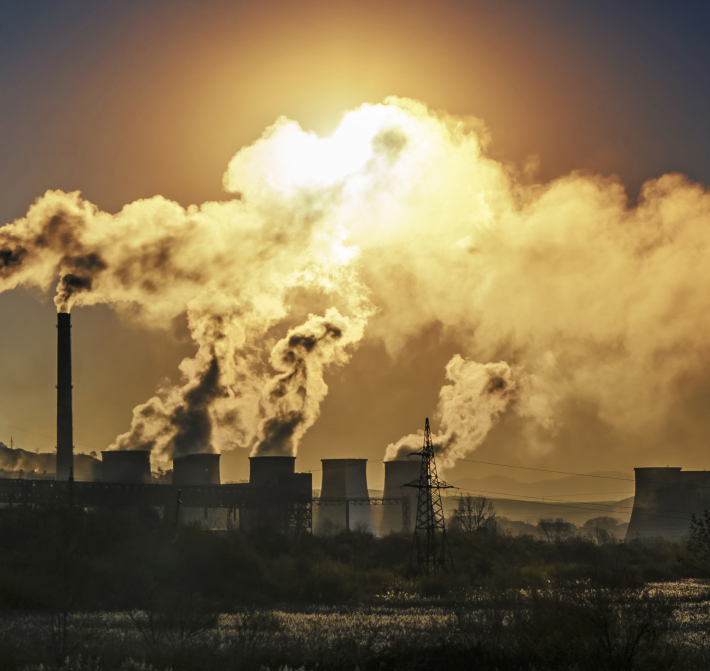
According to the United Nations Environment Programme (UNEP) we look set fair to have a global average temperature rise of 3°C by the end of this century. Doesn’t sound much? Well, it would be enough to produce what the WEF is calling a “planetary emergency”, with implications that are “catastrophic, wide-ranging and intersecting”. And that’s only the implications that we can see now – other risks are not yet known.
Any sustained rise, it is said, will accelerate the process and the damage it causes exponentially. If we are to limit the rise to 1.5°C, the current “safe upper limit” defined by the Intergovernmental Panel of Climate Change (IPCC), the “carbon budget” for the rest of the century is 10 more years of emissions at their current level. Now we see the challenge.
This may be the year that sees a sea-change in the way governments approach the problem (no pun intended). If that is the case, it’s likely that popular pressure will be the catalyst for change, coming off the back of events like the Australian wildfires – wherein the connection between chronic environmental stresses, disasters and climate change is effectively undeniable.
So, we all know that climate change is not a good thing. But why? Part of the value of studies like the WEF’s Global Risks Report is that they spell out the expected consequences, fill the gaps in our knowledge and make it clear why it matters at the local level – not just the global one. So, what can we expect if we don’t control the global average temperature rise?
Firstly, weather-related disasters of all types will be bigger, more damaging, more frequent and more costly (in all respects). And that’s potentially everywhere. It won’t suddenly happen, of course. The pattern will be one of things becoming steadily and irrecoverably worse. This seems to be under way already.
We have many weather-related risks. These include the more weather-specific ones like all types of flooding (pluvial, fluvial and coastal), storms, severe cold, heatwave and drought – and those where weather can be a causal factor, such as wildfires, dam failure, infrastructure damage and air quality. We have posted on most of these risks in the past year – catch up here.
The one that stands out for us (for immediate local impact) is pluvial, or flash, flooding. It’s the least predictable and the most random variety. It can strike almost anywhere. It often hits communities with no prior experience of flooding. This involves people who are not aware of the risk and are consequently ill-prepared – materially and psychologically. Check out our post on this risk here.
Secondly, sea levels are likely to rise. The IPCC warns of a potential 50 cm sea-level rise over the next 100 years. Low lying areas all over the world will be the most affected – but it isn’t just about the sea reaching new stable levels. In areas already prone to tidal and storm surges the risk of coastal flooding will probably increase in likelihood and severity. That includes large areas of the east and west coasts of the UK. The thawing of glaciers, ice-sheets and areas of permafrost (like the massive Russian tundra) could also lead to suddenly accelerated climate change and fundamental changes to global weather patterns – which will lead to even greater uncertainty and unpredictability as weather systems themselves change.
There is also the economic cost. The USA’s 4th National Climate Assessment of 2018 predicts that the costs of climate-related damage will reach 10% of GDP by 2100. And whilst everyone will take a hit, the main impacts will not be evenly distributed. The bigger and richer nations will bear the biggest economic costs; the smaller and poorer ones will bear the greatest human costs.
This, plus the impact of climate change on the distribution of, and access to, food, water and other resources could exacerbate geo-political tensions, making the world generally more volatile and political systems more confrontational. The net result of that is likely to be increased migration. According to the WEF, between 2008 and 2016, 20 million people a year were displaced from their homes by the effects of extreme weather.
If one inevitable result of climate change is more extreme weather (and that seems to be the consensus) then levels of migration will continue to increase. If the experience of previous large-scale inward migration is anything to go by, it is our local authorities who will ultimately have to manage the direct consequences of this global phenomenon.
This is just a very quick summary of some of the main likely consequences of uncontrolled climate change. It’s worth ending on a point that reflects a solid consensus. End-of-the-century timescales may make these effects seem comfortably far away, and a problem for the next generation – perhaps. Relatively few people reading this will be alive to see these effects. But the real point is that they will happen if climate change isn’t brought under control in this decade. In that sense the clock is ticking – quite loudly. That’s why the WEF’s use of the words “planetary emergency” is justified. It’s not alarmist, but it should be alarming.